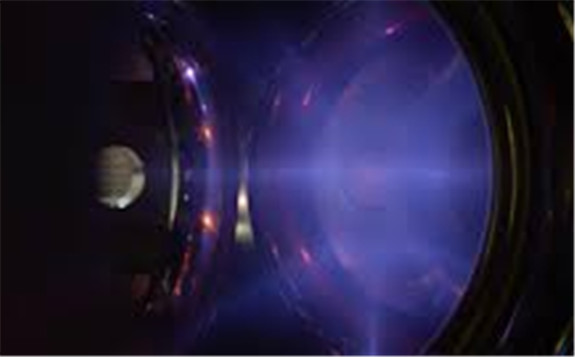Russia’s AA Bochvar Institute of Inorganic Materials (VNIINM – part of Rosatom’s Fuel Company TVEL) has developed a basic version of the technological tritium cycle for modernisation of the strong field tokamak (TSP) at the Troitsk Institute of Innovative and Thermonuclear Research (TRINITI). The work is taking place within the framework of the federal project "Development of technologies for controlled thermonuclear fusion and innovative plasma technologies", part of the comprehensive programme "Development of equipment, technologies and research in the use of atomic energy for the period up to 2024". VNIINM’s department of special non-nuclear materials and isotopic products together with the specialists from TRINITI have developed the basic version of the technological tritium cycle for the experimental modified high-field tokamak.

“One of the critical systems of the fusion reactor infrastructure is the technological tritium cycle. The use of deuterium-deuterium fuel mixtures in experiments leads to the production of tritium. It is necessary to clean tritium from the used plasma to ensure the operability of the TSP. This is the task of the technological tritium cycle," explained Nikolai Rodionov, head of TRINITI’s laboratory of the physics department of tokamak-reactors.
A basic technological scheme of the tritium cycle has been developed with a description of the main stages and equipment used, and confirmation calculation of the process parameters was carried out. The cycle includes all stages of tritium use, from storage to processing and concentration of tritium-containing waste. Also presented are systems for isotopic analysis of gas mixtures, tritium control and air purification of the working room.
Although VNIINM undertakes research and development in the field of thermonuclear energy, no work on the creation of the tritium cycle has been carried out since the beginning of the 1990s. There are several dozen experimental thermonuclear installations around the world but only the JET (UK) and TFTR (USA) facilities have been used for tests using deuterium-tritium plasma. All other experiments used stable hydrogen isotopes.
However, the use of a deuterium-tritium mixture as fuel is essential for the achievement of the thermonuclear combustion regime necessary for future thermonuclear power engineering. Experiments with a tritium-containing mixture of hydrogen isotopes make it possible to verify the technological and economic parameters of future thermonuclear installations. Therefore, work to create a tritium technological cycle is extremely important for ongoing research in the field of thermonuclear fusion both in Russia and worldwide.
“In the near future, it is planned to continue the work, which will consist in the development of a preliminary design, and by 2024, complete design documentation for the tritium complex. This will require a step-by-step check of all the nodes being developed. In view of the fact that the facility will store and use a significant amount of tritium in comparison with the research volumes, each stage must guarantee the safety of operation. And by 2030, all the developments that have been made should be embodied in the industrial tritium cycle of a real tokamak,” said Alexander Anikin, head of VNIINM’s technology and equipment development department for the production of isotopes and isotopic products.